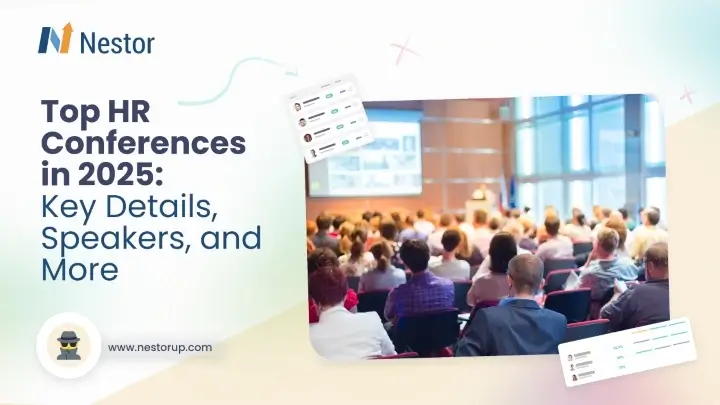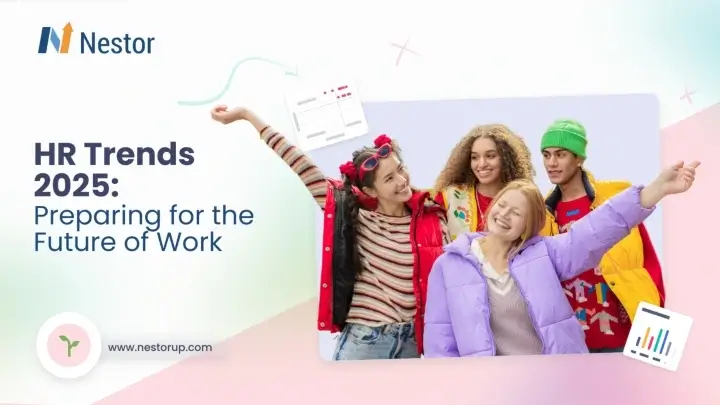Keeping up with the latest developments in the business world is essential for any HR department. And according to insights from Gartner, one of the main top 9 trends that will define the world of work in 2023 is quiet hiring.

After an initial look, it is easy to understand why more and more companies have turned to it: redeploying (or retraining) existing employees is cheaper than hiring new ones, in most situations.
But are the benefits of quiet hiring all they are purported to be? And when should an organization embrace this practice? We’ll answer these questions and others in today’s article. Let’s dive right in!
What is quiet hiring?
Quiet hiring is a cost-effective way to acquire new skills and knowledge without investing time, money, and other resources in new full-time employees. While the concept itself isn’t new, quiet hiring usually manifests as one of the following practices:
- existing employees move to new roles
- existing employees take on additional projects and responsibilities (and benefit from extra compensation and training, if needed)
- temporary workers (contractors, freelancers, gig workers) are hired for a short period of time or specific projects, either short- or full-time
In essence, quiet hiring is a way of exploring non-traditional talent pools and making the most out of existing workers, deploying them where they can have the biggest impact.
A crucial aspect of this practice is providing fair additional compensation in relation to employees’ new tasks and responsibilities. Otherwise, organizations may experience a decrease in employee satisfaction and higher attrition rates.
The movement of employees is typically temporary. That’s how we’re conceiving of quiet hiring as a concept. But if an employee wanted to make it permanent, I’m sure the organization will be open to that conversation. Because internal talent who have not only the skills and abilities to do the job but knowledge of the organization and demonstrated performance in a role — that’s really appealing.
— Emily Rose McRae, Senior Director Analyst at Gartner
Why is quiet hiring trending in the workplace?
The practice of quiet hiring has emerged as a response to the tight labor market, where the lack of critical skills and knowledge remains high despite the economic downturn.
Coupled with increasing pressure to reduce (hiring) costs, organizations have started to look for new alternative ways to fill their skills gaps. And turning to their existing employees — who could be a close match to in-demand roles — and assigning them to short-term projects, cross-functional teams, or new initiatives has emerged as a cost-effective and efficient solution.
Another factor that has contributed to the increasing momentum of quiet hiring is its impact on the ability of companies to adapt their talent decisions quickly in response to the shifting business priorities — which is a must in the current unpredictable economic environment.
By redeploying people promptly where the business needs them most, practices like quiet hiring can even act as alternatives to external hiring.
What are the benefits of quiet hiring?
If implemented ethically and well, quiet hiring can become an essential pillar of workforce strategies and help companies do more with less. Some of the main benefits are:
Optimizes budgets and expenses
By using internal talent to address critical business needs, companies can reduce hiring expenses and keep payroll costs in check. Additionally, the existing budgets and extra resources that become available can be invested in the upskilling and reskilling of existing employees.
This is not only profitable but also worthwhile since “79% of L&D leaders agree it is less expensive to reskill a current employee than to hire a new one.”, according to data from the LinkedIn Workplace Learning Report.
Increases engagement and retention
People who are quietly hired and receive the necessary support to thrive in their new positions can experience a higher level of engagement and satisfaction, which have a direct impact on retention rates. Keeping in mind that this does not apply to all employees, especially those who aren’t keen to make the switch and would like to return to their initial roles eventually.
Still, keeping top talent is extremely important, especially knowing that hiring timelines can be very long and, according to Gartner:
Assuming a salary of $50,000 and a time to fill the position of 100 days, the total cost (direct and indirect) of replacing an employee is over $18,000.
Improves collaboration and flexibility
Encouraging employees to pursue stretch roles across projects and teams will help them better understand the impact and role of each department in the company’s success.
This also acts as a learning experience, which will inevitably improve collaboration and create a more agile workforce and a flexible organization — both key elements in remaining competitive and responding quickly to changing markets and customer expectations.
Nurtures a culture of continuous learning
As long as organizations remain committed to the possibilities of quiet hiring, this process can, in time, reinforce (or help create) a culture where continuous learning and the ongoing expansion of knowledge and skills are part of the company’s overarching values and goals.
Bridges skills gaps
Addressing skills gaps is fundamentally one of the incentives behind quiet hiring. Add to this the fact that quiet hires often take on stretch roles that may or may not be aligned with their existing skill set, and we have a recipe for addressing the lack of critical knowledge and expertise.
This process can only succeed if employees who are hired quietly receive all the support needed for their new roles. This can include:
- encouragement and psychological support
- guidance and help from peers
- upskilling or reskilling programs relevant to their new tasks
How does quiet hiring impact employee development?
Whether quiet hiring has a positive or negative impact depends on multiple factors (we’ll discuss most of them in the next section of the article). But as far as employee development is concerned, it largely depends on:
- being transparent and clear about the process (answer why and what is changing)
- not forcing employees to take new roles (explain the critical need, but listen to their opinion)
- employee’s own perspective on new challenges and learning in general
While 63% of workers view quiet hiring as an opportunity to learn new skills, 19% are open to taking a new role only as long as it’s temporary and 15% are not open since it’s not the role they signed up for.
— Monster survey
When implemented correctly and benefiting from the approval of the workforce, quiet hiring can help people:
Avoid stagnation
Becoming comfortable in one’s role can lead to both boredom and lowered engagement. By participating in upskilling and reskilling programs as part of the quiet hiring process, employees can explore new paths and discover more about themselves.
Even if the role is just temporary or they don’t see it as a long-term option, it can lead to discovering new personal interests and other roles they might want to pursue within the company.
Remain competitive
When employees expand their skills and knowledge, they become more competitive as professionals and are able to negotiate better compensation. This increase in employability will be an asset in the long run, both at their current company and future employers.
Open the door to leadership positions
While some workers are very clear about their career paths and target vertical moves from the beginning, others may not always do so, even if they have the potential to succeed as leaders.
Quiet hiring is an excellent way to identify these hidden gems within the company and offer them the opportunity to try and potentially thrive in leadership roles — something that maybe they wouldn’t even have dared to think of before.
When to implement quiet hiring in your organization
Throughout our article, we’ve stressed that quiet hiring can have a positive impact if implemented ethically and well. This is important because, from the outside or the point of view of some workers, this practice can easily be regarded as a way to exploit them or ask them to perform additional work for the same compensation.
To prevent this from happening, we recommend being transparent and clear with your employees throughout the entire quiet hiring process and only turning to this practice when certain situations demand it.
1. Meeting critical business needs with fast redeployment of talent
When business priorities change or different opportunities emerge, like new lines of business, quiet hiring can be the most suitable and cost-effective solution to a long recruitment process.
In situations like these, quiet hiring will also enable organizations to avoid layoffs and close some of the existing skills gaps. Skills-based approaches to workforce planning and internal talent marketplaces will help identify the best-fit employees for these new critical needs and will clarify the necessary development opportunities to prepare them.
2. Tapping into new talent pools of available candidates
In some contexts, the quiet hiring approach allows employers to tap into a pool of high-quality candidates, who may not be actively looking for new opportunities.
By discreetly reaching out to potential candidates and assessing their interest and suitability, organizations can deploy talent that would otherwise not be visible through traditional job postings or recruitment channels.
3. Filling critical roles with ‘adjacent’ skills
Due to the fast-changing nature of skills, it’s sometimes difficult to find and recruit candidates with the right abilities, either inside or outside the company.
Combined with a skills-based approach, quiet hiring can help you identify people in your company who already possess adjacent skills and have the potential to take on these new roles or assignments through upskilling or reskilling programs.
4. Short-term answer to the ongoing skills shortage
It’s not uncommon for organizations to find themselves in a position where they can no longer increase the headcount — due to budget limitations or talent shortages.
This is when the leadership, together with HR and people managers, needs to evaluate the current workforce in a strategic way and deploy talent temporarily where it is most needed, making trade-offs in the process.
5. Optimizing more complex roles or cross-functional teams
In some situations, moving and training employees won’t be enough for them to meet the expectations of the new role. In this case, combining redeployment (quiet hiring) with temporary (part-time) talent can be the answer.
You can still move employees to roles that don’t fully match their expertise as long as the training and learning programs will help them take on most of the tasks.
For the more complex requirements of the roles, you can look at temporary workers who have the necessary expertise. In time, they can either act as mentors for the redeployed employees, helping them grow in that direction, or you can continue with this arrangement if the project or position is only temporary.
6. Skills only needed temporarily
Quiet hiring can also be a solution for filling the gaps related to skills only needed for a short time as part of a new project or assignment inside the company. In this case, organizations can access and borrow skills that are hard to find, difficult to train, or too expensive to hire permanently.
Our final thoughts
Instead of writing down our final thoughts, we’ve added these insightful tweets. What do you think?
The term “Quiet Hiring” #quiethiring is pretty silly. Every company I talk with is focused on internal mobility, career pathways, job redesign, and productivity hacks. It’s not about “quiet hiring” – it’s just making work more productive. Whoever coined this term, let’s kill it.
— Josh Bersin (@Josh_Bersin) January 12, 2023
Employees benefit from #quiethiring❓#Employees can benefit from the trend by acquiring new skills, which in turn can promote reengagement at work. Also, taking on more responsibility helps to build their skills and career visibility and position themselves for advancement pic.twitter.com/verPvz3t4A
— WEFIRE (@CrystalRozz) February 14, 2023
Using the existing #skills at their highest potential is one of the best alternatives to letting people go. The so-called #quiethiring is nothing else than increasing the efficiency of deploying talent based on #skills and business needs. https://t.co/cZgF1yzYJW
— Raluca Apostol ⭐️ (@RaluApostol) February 7, 2023









